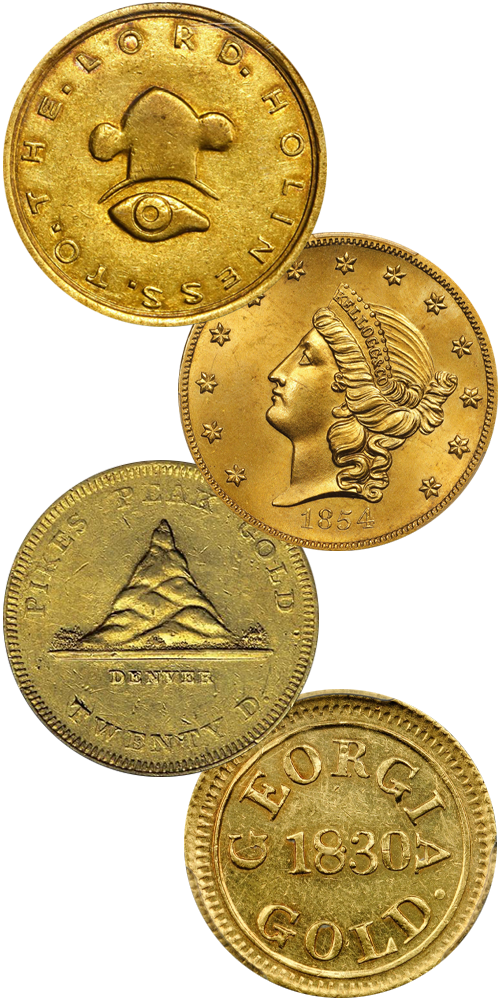Due to the danger and difficulty of transporting quantities of gold over vast distances in the mid-19th century, private minting facilities were established near sites where gold was being mined. While the federal government eventually established mints near these discovery sites, the process took a few years, and in the interim, private individuals struck gold coins which circulated in the locales near the mines. In 1838, the first branch mints were opened at Dahlonega, Georgia; Charlotte, North Carolina and New Orleans, Louisiana ending the early territorial gold period of the 1830s.
In 1848, gold was discovered at Sutter’s Mill in California, which led not only to the rush of 1849, but the emergence of another round of privately-issued gold coins.
There were roughly two dozen different individuals, firms, assayers and bankers that issued these gold coins, but over half of these are prohibitively rare, with only one to five pieces known. There were perhaps ten or so that issued sufficient quantities to be deemed “collectible” and even these are not inexpensive. They are simply available occasionally.
The following is a list of firms which struck territorial gold coins that can be found on the market given sufficient time and patience.
1. Templeton Reid (Georgia 1830)
2. Bechtler (North Carolina 1831-52)
3. Norris, Gregg & Norris (California 1849)
4. Moffat & Co. (California 1849-53)
5. Baldwin & Co. (California 1850-51)
6. U.S. Assay Office (California 1851-52)
7. Wass Molitor (California 1852-55)
8. Kellogg & Co. (California 1854-55)
9. Clark Gruber (Colorado 1860-61)
10. California Fractional Gold (California 1852-83)
Included on this list was the U.S. Assay Office located in San Francisco which served as a provisional government mint. It was administered by the assayer Augustus Humbert and associated with Moffat & Co. who supplied most of the gold used in striking the large denomination ($10-$50) coins. The San Francisco mint opened in 1854, eliminating the need for private gold coinage in California and most coiners ended their operations by the following year.
A final group of Territorial Gold coins emerged from Colorado in 1860-61 with most known examples coming from the firm of Clark, Gruber & Co. While the Coinage act of April 22, 1864 made private coinage illegal, it was not strictly enforced until the early 1880s, and very small denomination gold coins (25¢, 50¢ and $1.00) continued to be issued out of California. Over 570 varieties of these have been identified, and due to their relatively low cost, are popular with collectors. Beware though of modern replicas made as souvenirs for tourists!







